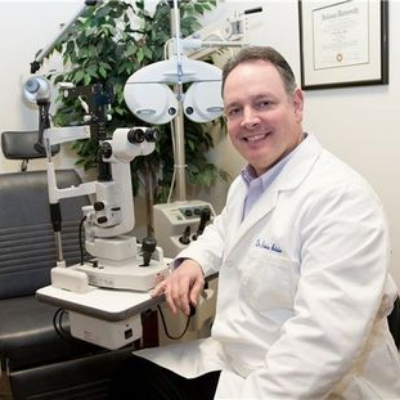Discover a Trusted Optometrist Chino for Household Eye Care Solutions
Discover a Trusted Optometrist Chino for Household Eye Care Solutions
Blog Article
Checking Out the Latest Technological Developments in Optometry and What They Mean for Eye Doctors
From the precision of Optical Comprehensibility Tomography to the nuanced understandings offered by AI-driven diagnostic devices, these developments are establishing brand-new standards in client assessment and therapy. As these developments penetrate the practice, optometrists are faced with the difficulty of embracing these devices to improve client results.
Advancements in Diagnostic Tools
Progressing the field of optometry, innovations in diagnostic tools have changed the way eye care experts examine and detect aesthetic problems and eye conditions. The previous years has actually seen significant technical advancements, allowing even more comprehensive and accurate analyses. Optical Comprehensibility Tomography (OCT), for instance, gives high-resolution cross-sectional photos of the retina, enabling the very early detection of diseases such as glaucoma and age-related macular deterioration. This non-invasive imaging strategy has become vital in modern optometric method.
An additional key technology is the introduction of innovative corneal topography systems, which map the surface curvature of the cornea with accuracy. These tools are especially advantageous for suitable contact lenses and identifying corneal conditions. Digital retinal imaging has changed conventional ophthalmoscopy, providing thorough, breathtaking views of the retina that assist in comprehensive aesthetic examinations.
The development of wavefront aberrometry has likewise been crucial, allowing the analysis of refractive errors with unmatched precision (Optometrist Chino). This modern technology aids in customizing corrective lenses and enhancing medical end results for refractive surgical procedures. Collectively, these diagnostic advancements empower eye doctors to supply exceptional individual treatment, making sure very early intervention and customized treatment techniques, inevitably boosting aesthetic wellness results
AI in Person Management
Structure on the structure of advanced analysis devices, the consolidation of synthetic knowledge (AI) in patient administration stands for a transformative leap for optometry. AI systems are progressively employed to improve performance, accuracy, and personalization in patient care. By examining huge amounts of data, AI can determine patterns and anticipate possible eye conditions, enabling optometrists to customize interventions better. This capacity is important in handling chronic eye conditions such as glaucoma and diabetic retinopathy, where early detection and constant surveillance are key.
Moreover, AI-driven systems promote streamlined patient communications and management procedures. Automated scheduling, digital examinations, and personalized follow-up plans not just enhance client contentment however likewise maximize time administration for professionals. These systems can triage patients based on the seriousness of their problems, making sure that those in crucial requirement get prompt interest.
Furthermore, AI enhances decision-making by offering optometrists with evidence-based referrals and treatment pathways. By integrating data from digital health documents, AI devices provide insights that educate scientific choices, reducing the risk of mistakes and improving patient outcomes. As AI remains to develop, its role in person management will likely expand, reshaping the landscape of optometric treatment.
Advances in Retinal Imaging
In the world of optometry, retinal imaging has seen impressive technological innovations that are enhancing analysis abilities and individual treatment. Innovations such as Optical Comprehensibility Tomography (OCT) and fundus photography have actually transformed how optometrists evaluate the retina and imagine. OCT, particularly, offers high-resolution, cross-sectional pictures of the retina, enabling the detailed evaluation of its layers. This capability is invaluable for very early discovery and management of conditions like glaucoma, diabetic retinopathy, and age-related macular deterioration.
Enhanced imaging techniques like OCT angiography are more refining diagnostic precision. Eye Doctor Optometrist. sites Such developments facilitate the recognition of min retinal modifications that can symbolize illness development.
Additionally, improvements in you could check here expert system are boosting retinal imaging by enabling computerized evaluation of big datasets. These systems help optometrists in identifying patterns a sign of pathology, consequently boosting analysis precision and performance. Jointly, these innovations are changing retinal imaging right into a keystone of modern-day eye treatment, improving end results and expanding restorative possibilities.
Teleoptometry's Expanding Function
Teleoptometry is progressively coming to be a vital element of eye care, driven by innovations in data and analysis tools. As optometry embraces digital improvement, teleoptometry promotes remote appointments, enabling eye doctors to extend their solutions beyond traditional boundaries. This is specifically useful in underserved and rural areas where access to specialized eye treatment is usually minimal. By leveraging high-resolution video conferencing and progressed retinal imaging, optometrists can carry out detailed eye tests from afar, making sure prompt diagnosis and treatment.
The combination of fabricated knowledge (AI) additional boosts teleoptometry, making it possible for the analysis of aesthetic information and helping in the detection of eye problems such as glaucoma and diabetic person retinopathy. AI-powered algorithms can quickly translate complex imaging data, giving optometrists with valuable insights that bolster clinical decision-making.
Additionally, teleoptometry supports connection of treatment through smooth assimilation with digital wellness documents (EHRs), enabling optometrists to preserve extensive person backgrounds. When consulting with different practitioners., this guarantees that individuals receive personalized and regular care also.
In spite of these benefits, obstacles remain, including ensuring information security and managing patient assumptions. Nonetheless, teleoptometry stands for a significant stride in the direction of even more obtainable, efficient, and patient-centered eye care. As modern technology advances, its role is positioned to expand even more.

Future Patterns in Eye Care
A myriad of ingenious fads is readied to reshape the future of eye treatment, driven by technical improvements and the advancing demands of individuals. One significant browse around these guys pattern is the assimilation of artificial intelligence (AI) in diagnostics, which assures to boost the accuracy and efficiency of eye examinations. AI algorithms can assess huge amounts of information from retinal photos, potentially spotting conditions like diabetic retinopathy and glaucoma earlier than typical methods.
In addition, individualized medicine is gaining grip in optometry, with genetic testing informing tailored treatment plans. This approach intends to enhance client outcomes by tailoring interventions to private genetic profiles. Wearable modern technology, such as smart contact lenses, is likewise coming up, supplying real-time tracking of intraocular pressure or sugar degrees, thus giving continual understandings into ocular and systemic wellness.
The adoption of increased truth (AR) and online truth (VIRTUAL REALITY) in training and client education is one more arising pattern. These modern technologies use immersive experiences that can improve understanding and skills both for patients and eye doctors. As these patterns evolve, optometrists must remain abreast of technological developments to give sophisticated treatment, making certain enhanced client outcomes and contentment in the vibrant landscape of eye care.
Conclusion

Collectively, these diagnostic developments equip optometrists to deliver exceptional person treatment, making certain early treatment and customized therapy strategies, eventually boosting aesthetic health outcomes.

As these modern technologies continue to advance, optometrists have to adjust and integrate them right into technique, ultimately optimizing operations performance and raising the criterion of eye care delivered to people.
Report this page